This post may contain affiliate links. Please read our disclosure policy.
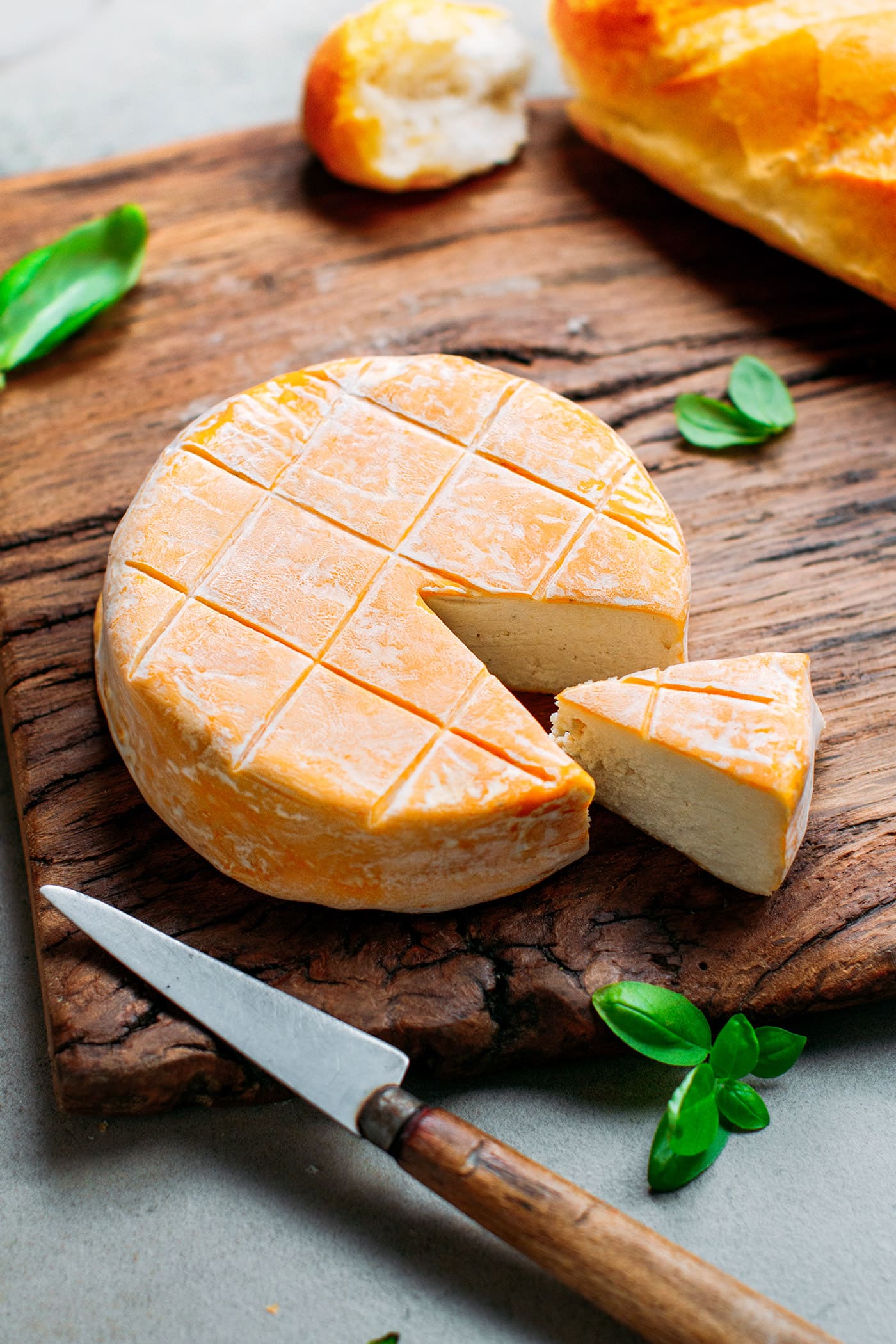
Introducing vegan washed-rind cheese!
You have been asking for this recipe, and finally, here it is. This vegan cheese will blow your mind with a stinky smell, a bright orange rind, and a super creamy texture! Plus, it has a super cool rustic look!

INTRODUCTION
This recipe is adapted from one of the recipes in my free eBook, “The Art of Vegan Cheese Making.” If you haven’t got it yet, simply subscribe to the newsletter below, and you will get the eBook instantly in your mailbox. It contains over 26 recipes, many tips, and a FAQ section. Plus, it’s free!
The recipe I shared in the eBook consists of cheese wrapped in spruce bark. The thing is, it’s not easy to find and makes the process a bit more complicated. I simplified the recipe and tweaked it slightly for a better texture and flavor!
Now you might wonder, how does it taste?! Well, let’s first start with how does it smell? It has a yeast scent. It’s aromatic and quite stinky.
Compared to the Camembert and the Blue cheese, I would say this one has a milder flavor. It’s a bit more milky, between a medium goat cheese and a young Reblochon. It also reminds me of a more commercial cheese called Cousteron. It is very creamy and soft and has a sticky, natural orange rind.
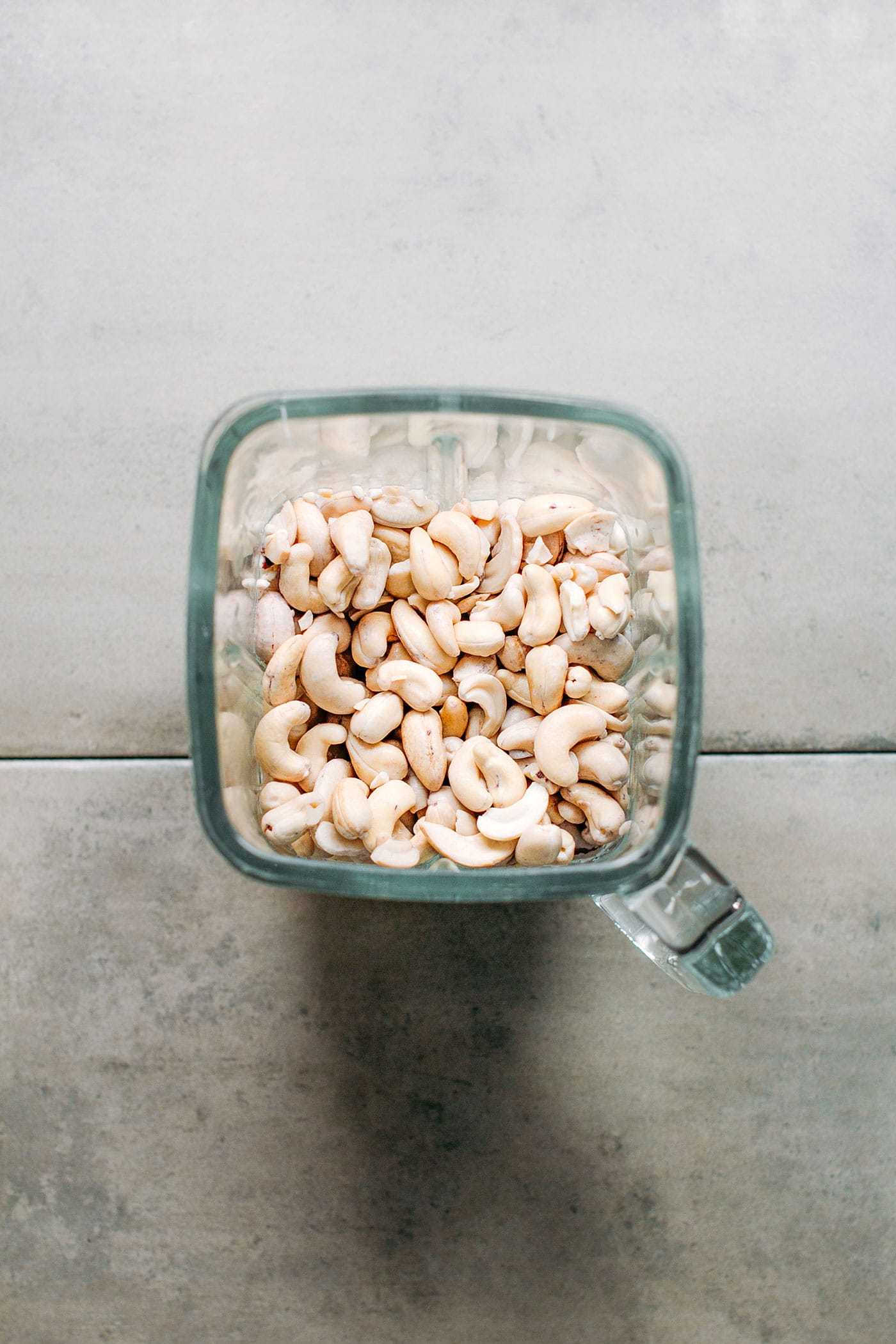
WHAT IS WASHED-RIND CHEESE?
If you are not familiar with it, washed-rind cheese is the cheese that is washed with a brine regularly throughout the aging period. This process helps with mold development and gives the cheese a distinct flavor and a colorful rind.
HOW TO MAKE VEGAN WASHED-RIND CHEESE
You will need raw cashews, some cultures, and annatto, that’s it!
Let’s talk about the cultures. Before diving deeper, I would like to state again that all the cultures required for this recipe can be vegan. I’m giving some links in the recipe below, but these links are only for the US. If you live outside the US, you will have to do your research to locate these cultures. I’m unaware of where to find these in every country, as I get asked that question many times.
One more thing, it’s easier to find non-vegan cultures. Considering the insanely low amount used in the recipe, even if you were going to use non-vegan cultures, you could still consider your cheese 99,9% vegan. Depending on your convictions, use vegan or non-vegan cultures.
Okay, so now, onto the role of each culture. First, we have mesophilic: responsible for the fermentation of the cheese. It’s what will give your cheese its sour flavor. It’s a bit like a starter when you make yogurt.
Next comes Geotrichum Candidum: This ripening culture will help create a thin rind on your cheese. It will also be essential taste-wise, giving the cheese a milkier, stronger flavor. Geotrichum Candidum is often used in goat cheese as well.
Finally, B. Linens: This mold is responsible for the orange color and the yeasty aroma. Combined with Geotrichum Candidum, it helps give extra flavor to the cheese.
One more essential ingredient to this recipe is annatto. This natural coloring helps the cheese get its orange color. You can omit it, though, it won’t change the taste of your cheese, but it won’t look as colorful.
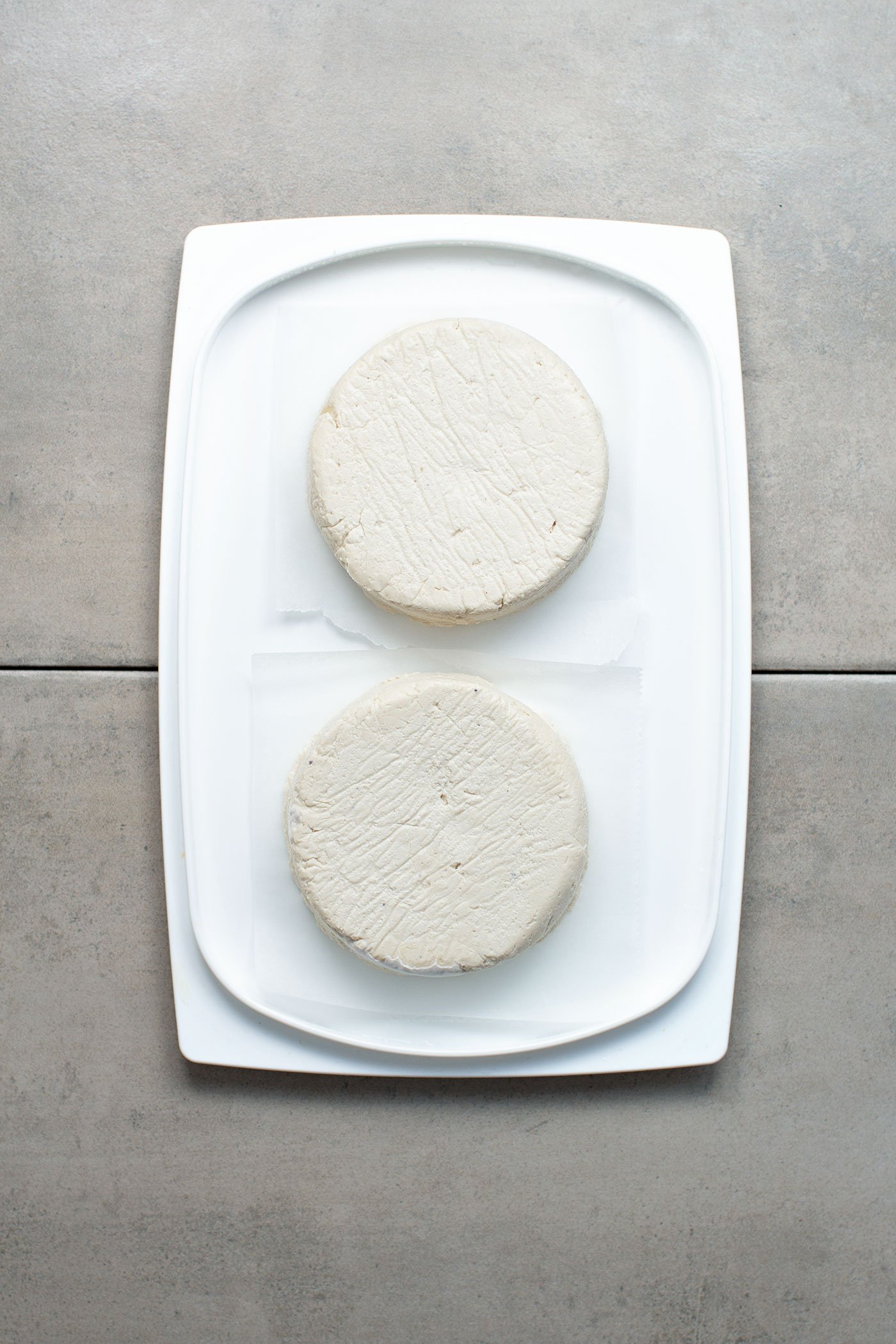
The preparation of the cheese is quite simple. Blend soaked cashews with water and cultures until smooth. For a little hint of sweetness, I added a tablespoon of sweet white miso, totally optional, but it adds another level of flavor, in my opinion.
Once your mixture is smooth, transfer to round springform pans, cover with plastic film, and refrigerate overnight.
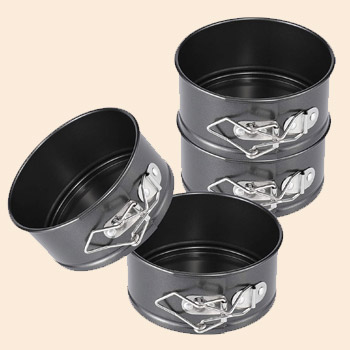
Springform Pans
While you can use any mould to shape your cheeses (large cookie cutters work great too), I highly recommend using springform pans, it makes the process much easier.
Regarding the aging temperature, you want to age your cheese the whole time at 55-57°F (13-14°C).
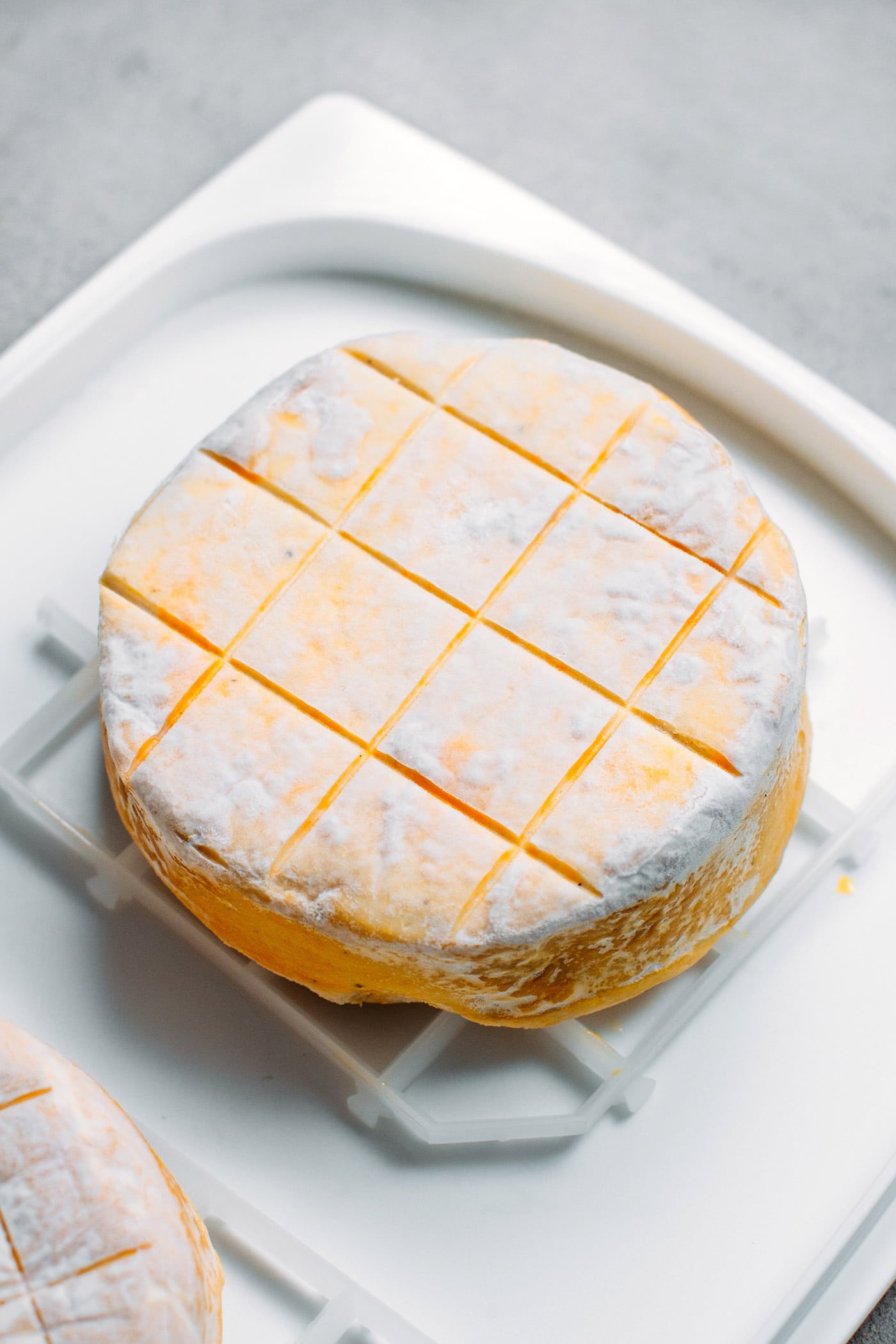
The next day, it’s time to salt your cheese: sprinkle salt on each side and gently rub it with your finger.
It’s also time to prepare the brine we will use to wash the cheeses daily. The brine consists of water, salt, annatto coloring, Geotrichum Candidum and B. Linens (to kickstart a bit the mold growth), and the alcohol of your choice. I went with cognac, but almost any type will work.
After 2-3 days, you should start to see some white mold appearing. That’s a good sign! It is actually the geotrichum candidum. At this point, you can start washing the cheese.
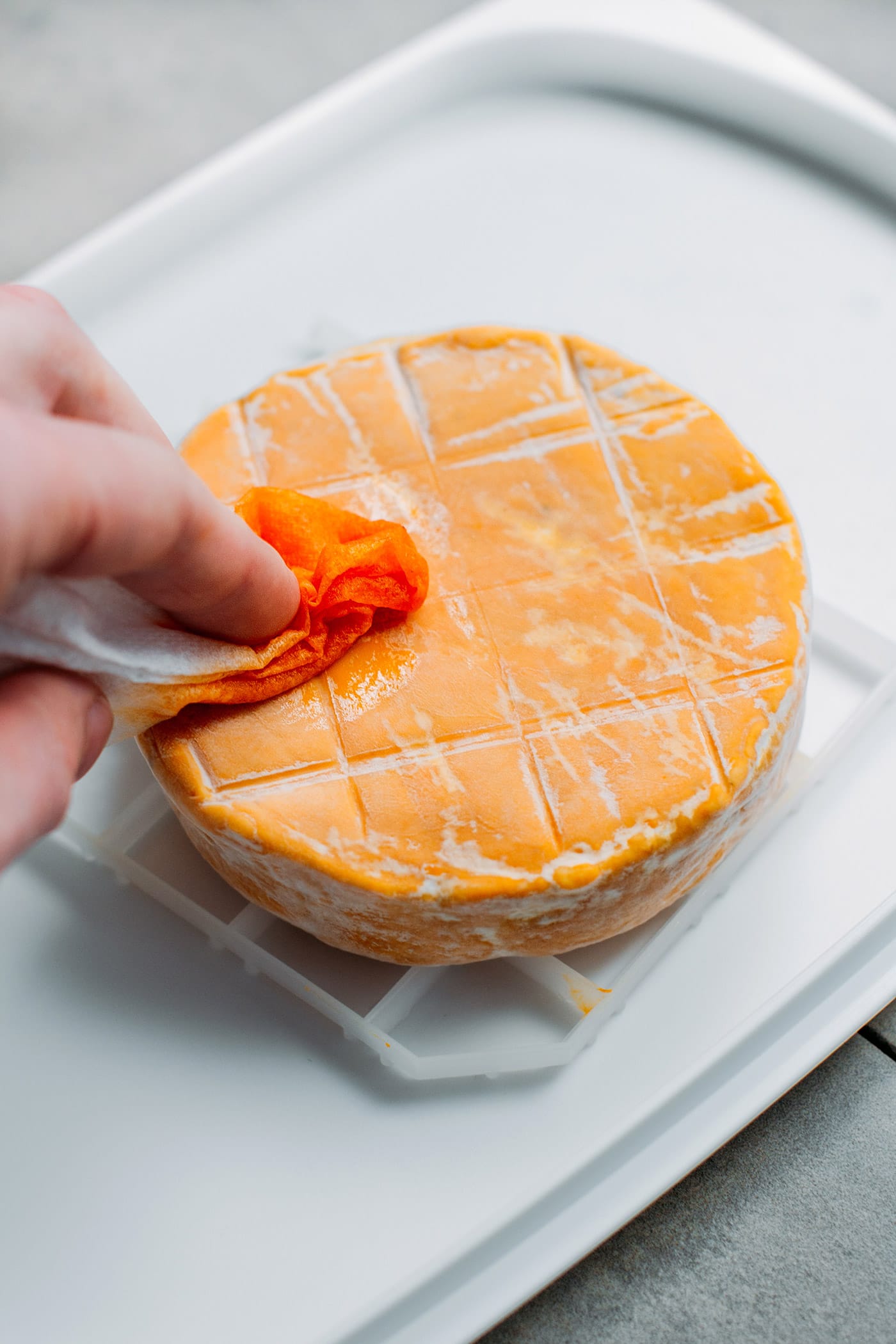
Be gentle when washing; you don’t want to scrape off a layer of cheese. Just lightly rub the sides and faces. I recommend using a kitchen paper towel to wash the cheese. I found that to be the easiest way. Otherwise, you have to use a clean kitchen towel every time.
I usually recommend waiting one day after the first wash before flipping the cheese and washing the other face. After that, cheeses should be cleaned once a day (it’s okay if you miss a day!). A soft rind will form after 5-6 days, making it easier to wash them.
You can see below the cheese after getting washed. It’s still slightly shiny but not wet. Don’t drown them!
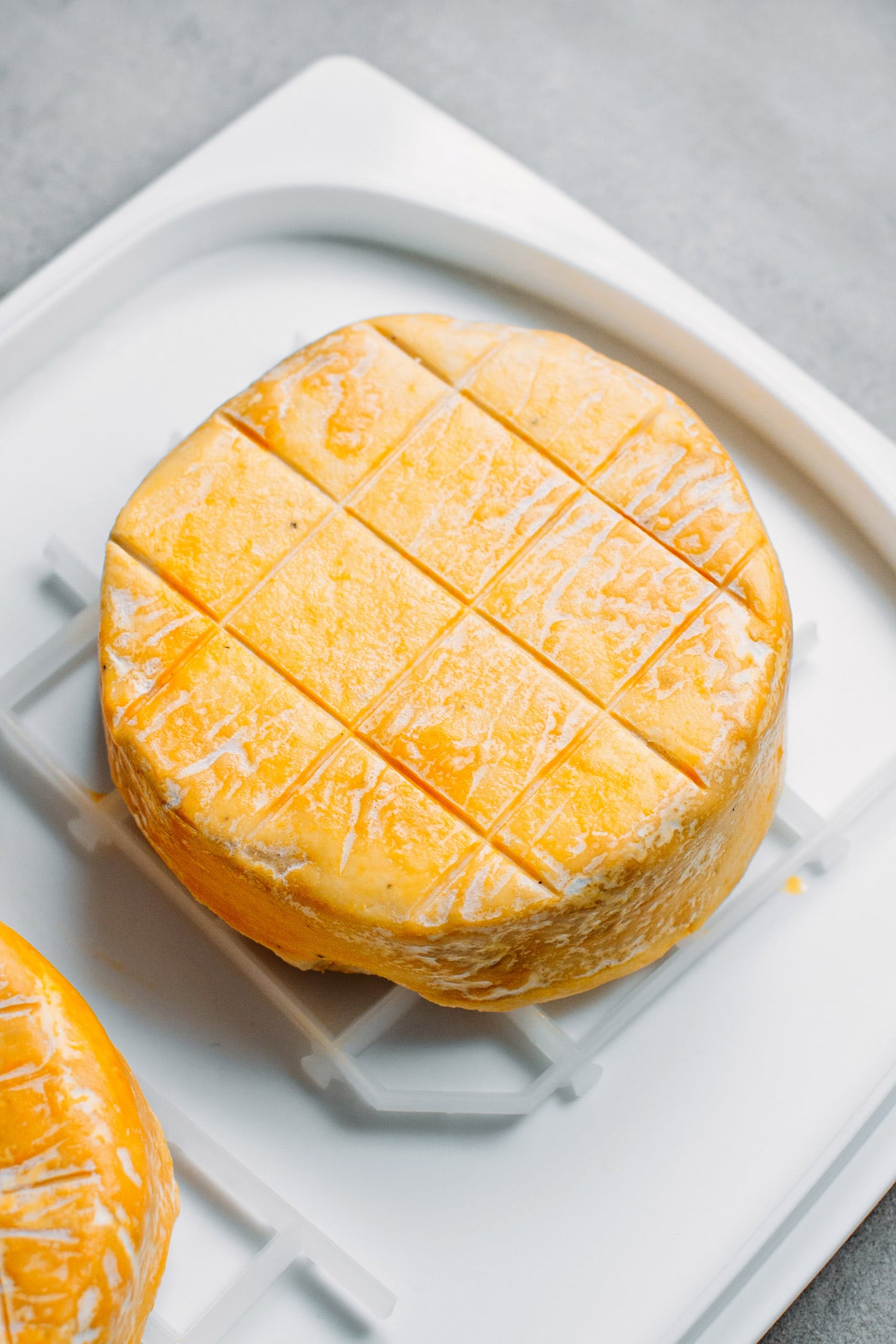
Wash your cheese daily and always keep them in a container to keep enough moisture to allow good mold growth. After about 20 days, your cheese should be ready to eat and have a nice orange color and a sticky rind. If you want to ripen them a bit more, wrap your cheese in cheese paper and let them age for another 7-15 days in the refrigerator, the flavors will develop even more.
The white “dust” you see on the cheese is the geotrichum candidum which is still growing a bit, even after washing it multiple times. That is normal, and I think it makes the cheese look cooler.
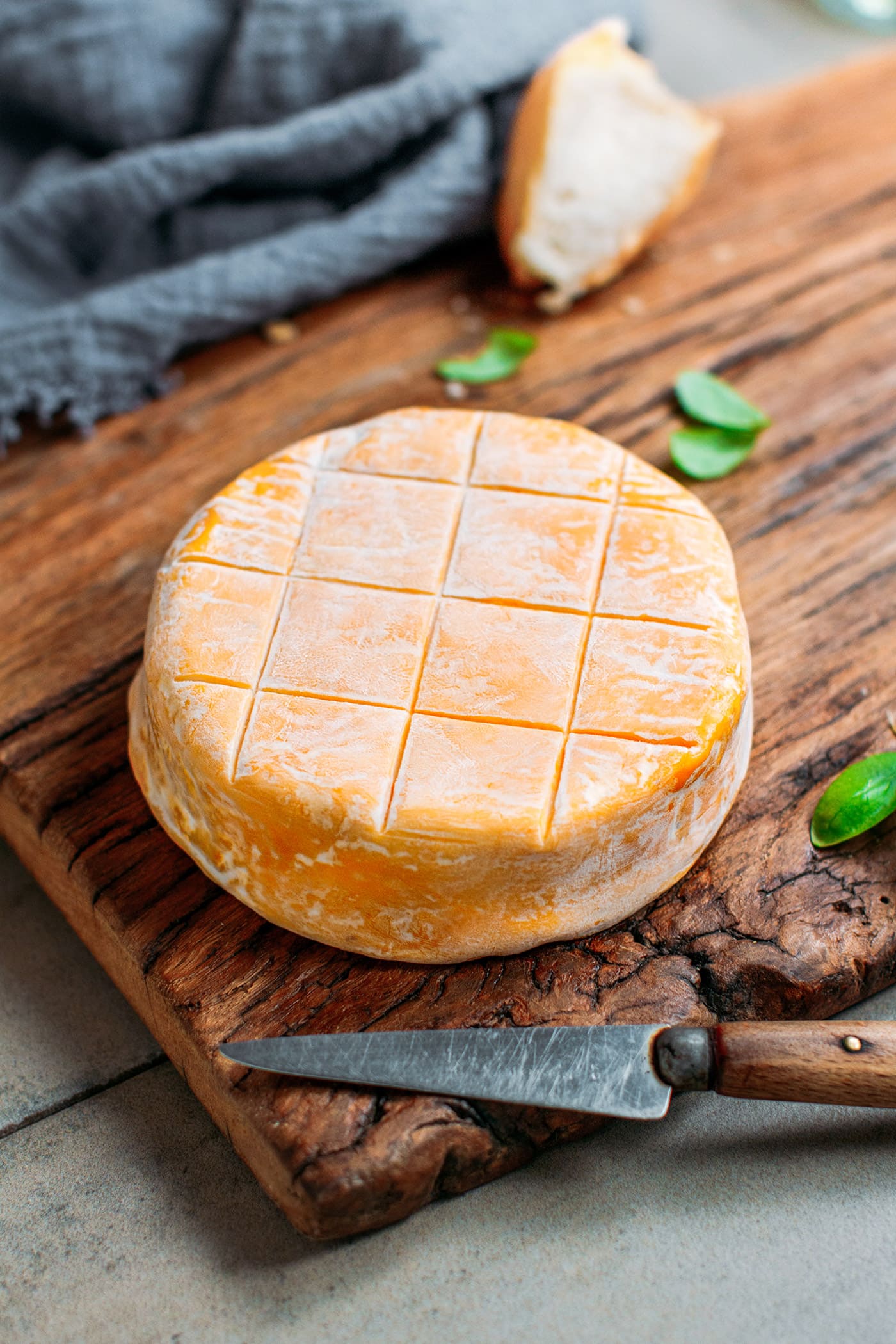
I also tried smoking this cheese. It’s amazing! It’s super creamy with a deep and warming smoky flavor. If you are interested in learning how to smoke vegan cheese, check out the method on the Hickory Smoked Vegan Cheese recipe post!
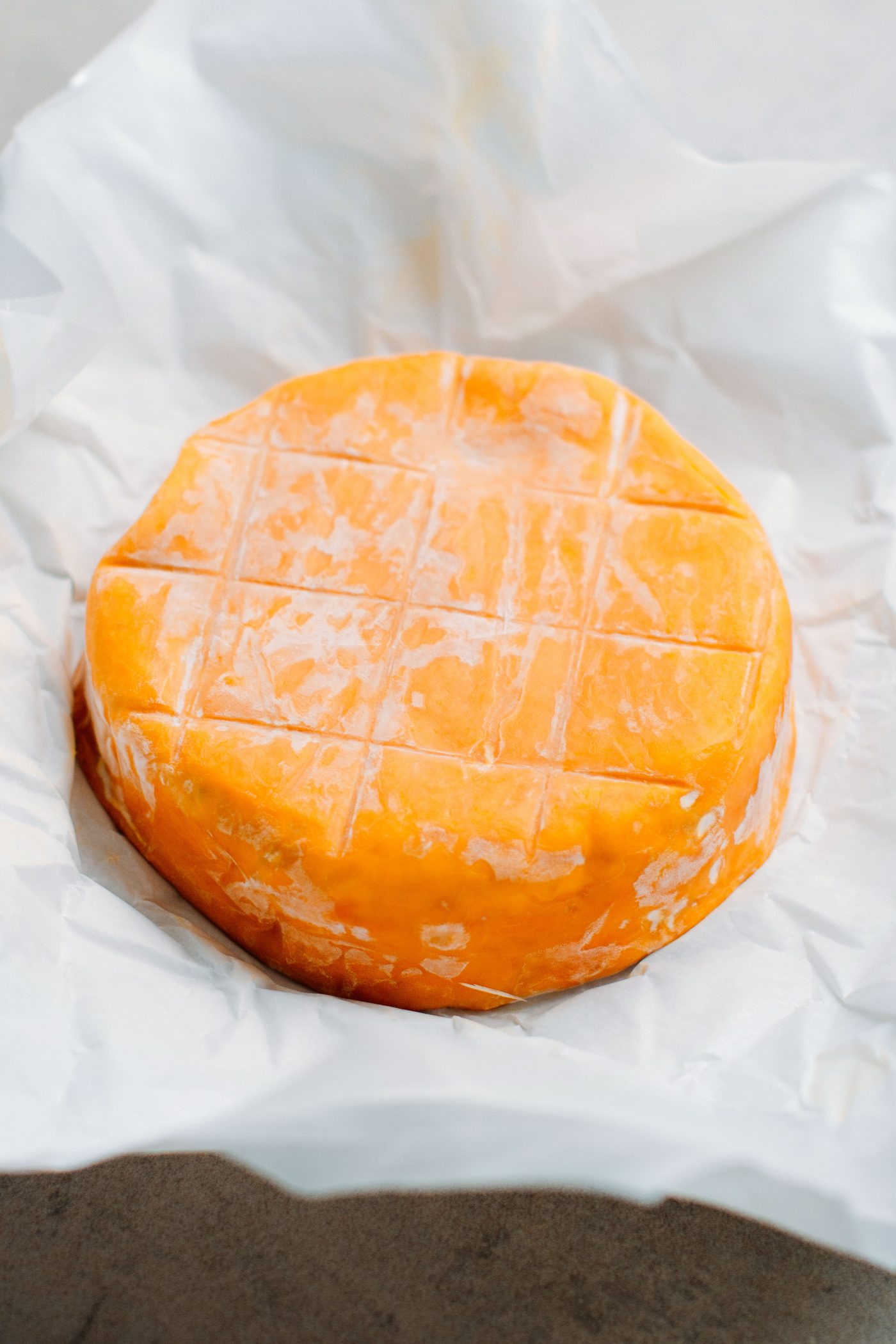
What is the best way to enjoy this vegan washed-rind cheese? Keep it simple, with a slice of bread or on toast. It goes well with sweet white wines like Sauternes, Gewurztraminer, or Muscat!
Looking for more vegan cheese recipes? Check out the Vegan Aged Camembert, Vegan Blue Cheese, Hickory Smoked Vegan Cheese, or this Sun-Dried Tomato Camembert!
Let me know in the comments if you try this Vegan Washed-Rind Cheese recipe!

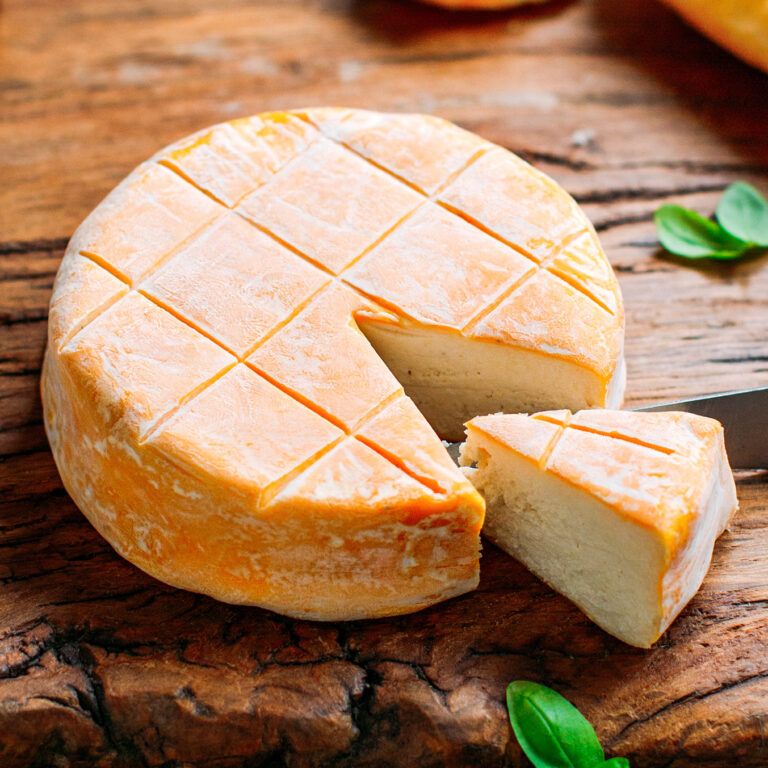
Vegan Washed-Rind Cheese
Ingredients
- 3 cups raw cashews soaked overnight
- 1/4 cup water (preferably boiled and cooled down)
- 1 tbsp sweet white miso
- 1/16 tsp mesophilic culture
- 1/16 tsp geotrichum candidum
- 1/16 tsp b. linens
- salt
Wash
- 1 cup water
- 2 tbsp cognac
- 1/4 tsp salt
- 1/2 tsp annatto coloring
- 1/16 tsp each geotrichum candidum and b. linens
Instructions
Preparing The Cheeses
- Drain your cashews and transfer them to a large mixing bowl. Bring a large pot of water to a boil. Once boiling, pour the water over the cashews and let it sit for about 30 seconds. This step helps kill possible bad bacteria.
- Drain the cashews and let them cool for a few minutes. Transfer to a high-speed blender, add the water, and blend until you get a smooth mixture. It should have the consistency of a very thick cream cheese. Make sure your mixture is not warm. If it is, wait a bit until it is not warmer than room temperature.
- Add the sweet white miso, mesophilic, geotrichum candidum, and b. linens. Blend for another 10 seconds.
- Line 3 4-inch springform pans with plastic wrap. Divide the mixture between the springform pans and press it down to shape it into a wheel (use gloves or plastic wrap as the mixture is very sticky). Cover with plastic film to touch and transfer the springform pans to a refrigerator (or cold room) at a temperature of 55-57°F (13-14°C).
Salting
- The next day (day 2), carefully remove the cheese from the springform pans and transfer it to a small container lined with parchment paper. Sprinkle each face of the cheese with about 1/4 tsp of salt, use your finger to spread the salt evenly on the front and sides of the cheese. At this point your cheese is still very soft, so be careful when flipping it, I recommend using a plate line with parchment paper to flip it more easily.
- Close the container with the cheese inside and place it back into your refrigerator.
- Prepare the brine: bring one cup of water to a boil. Remove from heat and let it cool completely. Transfer to a bowl and add the cognac, salt, annatto coloring, and cultures. Cover with plastic wrap and refrigerate.
Aging and Washing
- The next day (day 3), your cheeses will have drained some water because of the salt. Use a kitchen paper towel to remove the droplets inside the container. Place your container back into the refrigerator.
- On day 4, dip a piece of kitchen paper towel into your prepared brine and gently wash the top face and sides of your cheese. On day 5, flip your cheeses and repeat with the other face.
- On days 5-6, you should start to see a thin layer of white mold growing. That's good news! At this point, transfer the cheeses to a small grid that fits into your container.
- Wash the top face and sides of the cheese, carefully flip it and wash the other face. You will repeat this step every day for the next 15-20 days. Cheese must be kept in a container and at a temperature of 55-57°F (13-14°C) during the whole aging period. The brine must be kept in the refrigerator and will keep for about 20 days as well.
- After about a week, cheeses should have developed a thin orange rind and have a subtle yeasty smell. Keep washing the cheeses everyday for at least another week.
- After a total of about 20 days, wrap your cheeses in cheese paper and refrigerate for another week at a slightly colder temperature. This will allow flavors to develop.
- Enjoy with bread, toast, or use as a pizza topping, to make sauces, etc! Cheeses will keep for up to 3 weeks in the refrigerator.
Nutrition
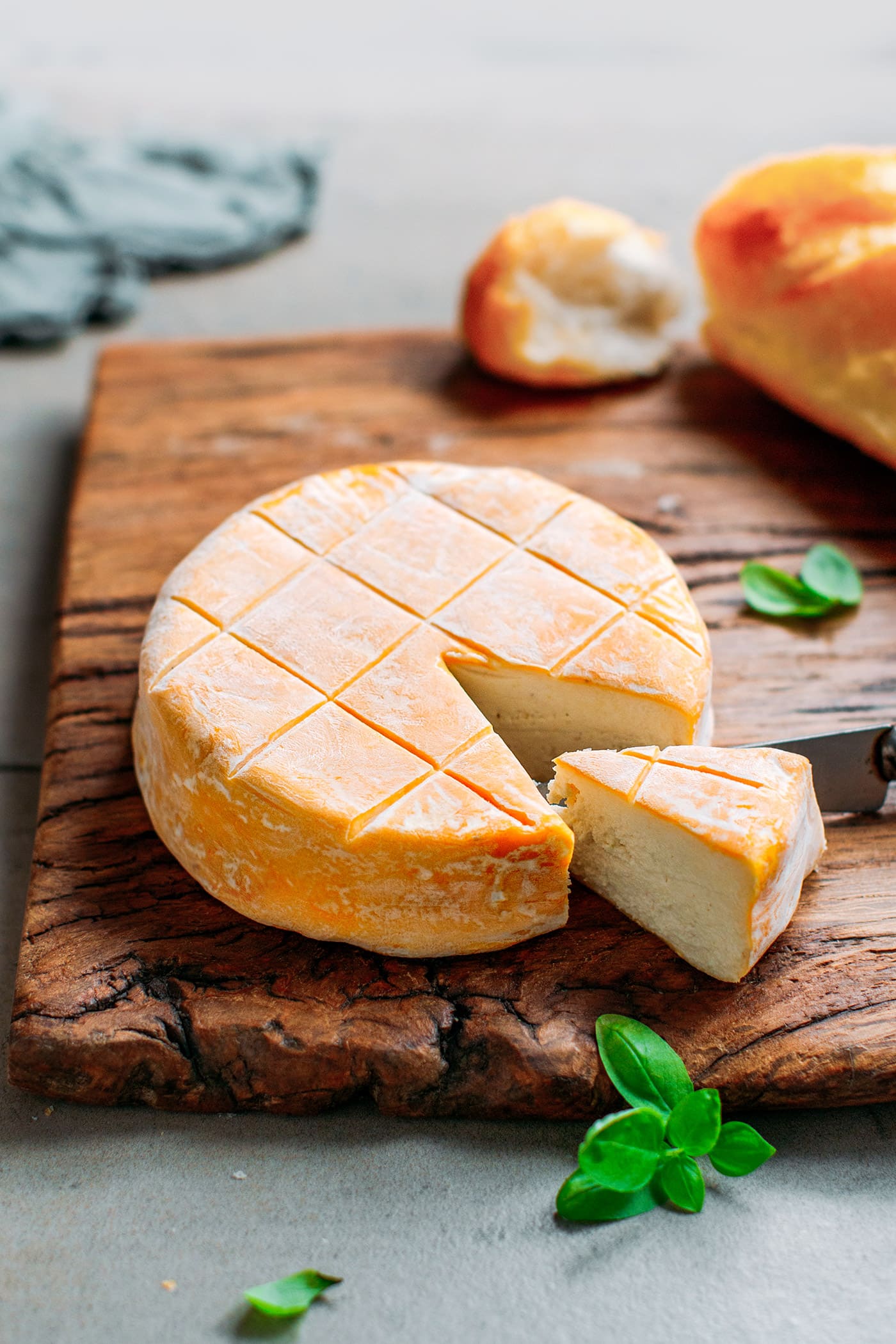

About the Author
Thomas Pagot is the founder, photographer, and recipe developer behind Full of Plants. He created the blog in 2016 as a personal cookbook for vegan recipes. Through years of recipe development, Thomas has successfully grown Full of Plants into a trusted resource for plant-based recipes.
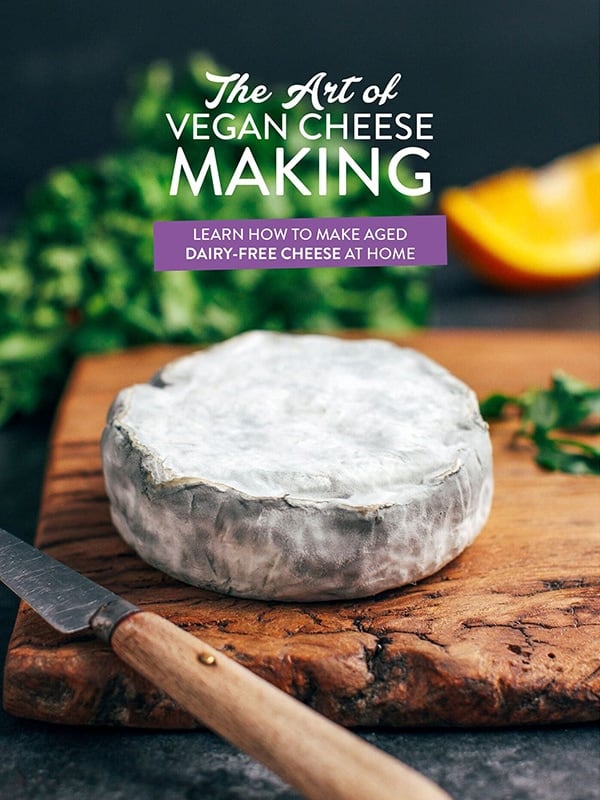
🧀 25 Mind-Blowing Vegan Cheese Recipes!
Sign up for the Full of Plants newsletter and you’ll get new recipes delivered by email weekly, PLUS your FREE 100-page printable eBook!
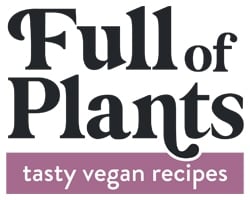
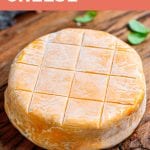
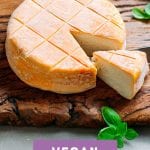
This looks so delicious, but honestly it is hardly simple to make. I am sure it took many attempts and lots of time to perfectly. How do you even measure 1/ 16 of a teaspoon??? I am an ambitious cook, but this looks like it should be left to experts! It would. be so disappointing if it turns out a disaster! Sorry to be pessimistic but has anyone had success with aged and “mouldy” cheeeses?
You simply take a 1/8 tsp and fill half of it, nothing really complicated. Regarding moldy cheeses, hundreds if not thousands of people tried my Vegan Camembert, Blue cheese and many other cheese recipes and had great success with it. Now, obviously this is not a 5-minute or super easy recipe, but I published it for all the people interested in vegan cheese making 🙂 I do agree it’s not for everyone though.
Hi Amanda,
You can buy a set of stainless steel mini measuring spoons on eBay. They will measure from 1/4 teaspoon to 1/64 teaspoon. True it is a commitment to make these vegan aged cheeses, but really worth it if you love and miss cheese. I have made Thomas’s aged Camembert three times so far. It is so good. And it impressed non-vegan family as it was just as good as its dairy counterpart.
The cream cheese recipe is great too as is the ricotta. The cream cheese can be made more liquid to be like sour cream. Both of these recipes would be good starters as they are quicker and require less special ingredients and less specific temperatures. I used my dehydrator for the ricotta.
Apart from the ingredients in the aged cheeses such as this recipe, it is worth getting the other bits and pieces such as the spoons, springform pans, cheese mats,etc. I also bought a cheap wine cooler to age the cheese in. It seems a bit extravagant but the temperature is crucial for the aged cheeses.
Hope this helps. It is really worth the effort!
Julie
I have been making Thomas’ vegan cheese recipes since last autumn and they have been life-changing for us as we missed dairy cheese so much when we changed to a plant-based diet! I have made his aged camembert, blue, cream cheese and smoked hickory – incredibly delicious! I’m not a great cook but i love baking and enjoy following detailed recipes and love a challenge – so it is definitely doable! I am very grateful to Thomas for sharing his recipes!
Hi Thomas can I use brandy instead of Cognac in this recipe?
Janet
Hi Janet,
Yes, it will work!
Thomas
Will bourbon or beer work? I have no cognac or brandy.
Yes, bourbon should work as well!
Hi Thomas!
I would love to get your cheesemaking e book. Have signed up for it a couple of times, but never got it. It’s been at least a year. Would you please look into this for me?
Thank You Very Much!
Jo
Hi Jo,
Sorry about that! I just sent you the ebook!
Hi Thomas,
I keep signing up for this cheese book as well, and it never comes. Could you please send it to me as well?
Thanks!
Hi Deb,
I just re-sent it to you.
THANK YOU!
I would like to get into cheese making. Can you post sources for the additives (yeast, bacteria) and the containers and grids if you buy them? Also, my refrigerator is colder than 55-57 degrees, actually set at 43 degrees F. I’d assume this is too cold for the culture/bacteria to thrive?
Hi Nina,
I live in France, so it’s very difficult for me to give you a source for the cultures and tools. It depends on where you live. I would recommend checking cheese making supply websites in your country, you should find the cultures easily. Regarding the grid, I got mine from a cheese maker shop and then cut it so it fits in my container. The containers I use are just old tupperware boxes 🙂
And yes, 43°F is too cold I’m afraid.
Sounds good, but could maybe use a better name? “Oooh, what kind of cheese is this?” “Oh, washed rind. It’s along the lines of scrubbed peel or exfoliated crust, you know?”
I’m not sure I know actually. This cheese is not exactly similar to a dairy cheese that already exists as opposed to camembert for example, so while it might not be a precise name, it’s one that is the most descriptive.
Hi Thomas
Great recipes. This is probably closest to German Limberger cheese. Yummy and stinky. I used to love it so will definitely be trying this.
Hope you will like it Helen! I have never tried Limberger so I can’t tell.
I’ve tried several times to get the e-book without success. Is there another way? Can I purchase a copy through another source?
No need Steve, I just sent you the eBook! 🙂
I LOVE your book, and can’t wait to try this new cheese!
Thanks so much Gail!
Hi Thomas,
thank you for your generosity! for your time, dedication and sharing the recipe, I am so thankful!!
It does not look hard at all, the steps are simple.
Can you kindly tell me, is the alcohol mandatory for the outside of the rind? What happens if it is omitted?
thank you!
Hi Susana, you’re welcome!
It’s actually simple, the “difficult” part is getting the cultures and taking a few minutes everyday to wash the cheeses 🙂
The alcohol is not mandatory, it simply adds a bit of flavor, but it doesn’t dramatically changes the taste though.
Where do I buy mesophilic culture and bacteria?
Debbie, it really depends on where you live, as explained in the post you will have to do your own research. If you live in Europe, check out Cashewbert, they have a lot of vegan cultures and supplies.
Would it work in a refrigerator with 8C as a temperature?
I’m afraid it won’t give good results, the mold really strives at 13-15°C.
This looks amazing! I was wondering if you would share your source for vegan geotrichum candidum- I’m in the US and have be unable to find one.
Thanks!
Hi Valerie,
I’m not located in the US, sorry. Check out cheese making supply websites.
Valerie, I’m not sure how old your comment is, but the best source of vegan cultures in the US is: http://the Cheesemaker.com/vegan
So ymmy
Thx alot
So ymmy
Thx alot but in Egypt I can not find the ingredients and I can’t buy online
Sorry to hear that!
HELLO Thomas!!!
Im a great fan of work, you are such and inspiration. Im day 8 the process of doing this washed rind cheese but there is no signs of any white parts growing. My fridge (wine fridge) is at 13 dC. Maybe i didnt mesure it correct? i dont know. HELP!!!!!!!! : p
Hello!
Thanks for your kind words! Are your cheeses still moist? Also, did you add all the cultures of the recipe?
Yes they are quite moist.
Hi Thomas
I made this cheese as soon as the recipe was out, and are onto eating our second one.
Turned out beautifully, fully covered in a very pretty orange rind and delicious.
I ended up applying the wash with a very clean finger instead of a piece of paper towel. Found it easier.
I have tried two kinds of cheese mat. One fine and one with wide grid. I find the wide grid less if a bother with sticking, and the key to peeling it off the cheese is to do it very slowly and basically let the cheese peel itself off at its own pace with gravity. If you rush it, that’s when it sticks. Just thought I’d share that for people having trouble with sticking.
Thanks again for great recipes.
Julie
Hi Julie,
Awesome! Thank you so much for your feedback, I’m glad you liked this recipe 🙂
Exactly, let the gravity do its job! You are completely right, if you are patient when removing and flipping the cheeses, they will come very easily.
If your looking for a nice cheese cave check out the Reptile Egg Incubator on Ebay. Good temp control cools and heats. The Camembert cheese came out great first time. I had a few wheels that got obviously contaminated (something to work on) Thanks great project!
Thanks for sharing Alan!
Good time! Do you think this cheese can be made from tofu or soy milk? I will be very grateful for the answer. Good luck!
It’s probably doable but it would require a lot of experimentation and trials as it would be a completely different recipe.
Hi Thomas,
I used to make homemade vegan cheeses with Miyoko Schinner’s Artisan Vegan Cheese book (I still have the book). The cheeses were quite good, however we’ve moved away from carrageenan in our diet given the concerns and her aged cheese recipes contain it. So, I am looking forward to trying your cheeses!
For this cheese, can you please tell me if there is a substitute to the cognac in the wash that I can use? I have 3 people in my home (kids and adults) that cannot have the alcohol.
Hi Lisa,
I guess you could simply omit it (or boil it to evaporate the alcohol content), but the flavor will be a bit different. Be aware that there is very little, if no alcohol left in the final cheese.
Hi Thomas,
I’m hoping to receive the free EBook. I can’t wait to begin making vegan cheese for my son who can’t have any dairy products and Loves cheese. I will definitely be trying some of your recipes. Thank you so much.
Hi Nora,
I resent you the ebook, hope you will like it!
I absolutely love your recipes and have made several cheeses using them. One thing I think would help is a video since sometimes the instructions take many days or weeks. Just a thought!
Thanks for your kind words Anna! I will take note 🙂
Dairy culture (Mesophilic Culture) for a vegan cheese?
Rob, vegan mesophilic culture exists.
Hey Thomas! Thank you so much for the cheese recipes, especially for this recipe!!! I love him!!! I recently bought a koji, tell me how to use it, it’s very interesting to try it!!!
Hey Svetlana,
You are welcome! I am not very familiar with koji, except for making miso, sorry!
Thomas, I’m sorry, I spelled it wrong. You wrote in the cheese book that you use koji to make cheese. please write how to cook cheeses with koji!! Thanks!!
Great recipe, thanks!
Unfortunately, the b. linens and mesophilic cultures that you linked to are not vegan. They are both produced using lactose as a fermentation nutrient, as most cheese cultures are. I recommend purchasing from startercultures.eu if they ship to your location — they sell cultures that are 100% vegan.
Thanks Adam!
Yes, as noted in the post, it’s easier to find non-vegan cultures. Then it’s up to each individual to decide whether they mind using that or not.
Regarding the links, unfortunately, I cannot keep updating them, as products and references change often on Amazon. Sellers may sell a vegan version at one time (grown on dextrose) and change to another reference that is not vegan once they are out of stock.
I didn’t know about that website though, but it looks great and it seems they are having lots of references, thanks for sharing!
I love cheese very much. Your vegan cheese recipes were a big help for me when I switched to a vegan diet. Thank you for sharing Thomas.
Thanks Emy!
Hi Thomas,
First of all i want to thank you for sharing these amazing recipes! Such a gift! Thank you!
I was wondering how you create an environment to age your cheeses at 14C. I’m used to making tempeh and have made several incubators that hold higher temperatures than room temperature, but i don”t know how to create a lower temp. Maybe use an old fridge with thermostate and timer… or i could put a heat incubator in the basement, which has a baseline temp of 9C. But the basement holds a lot of competing molds and other organisms. How do you solve this?
Thank you!
Karlien
Hi Karlien,
You are welcome! When I started, I simply used my regular refrigerator that I set at its highest temperature (which was around 9-10 degrees if I remember correctly).
Nowadays, I am using a small refrigerator (the kind that is made from keeping cans and drinks). I changed the thermostat on it to be able to set it at a higher temperature. You can probably find a basic fridge thermostat on Amazon for $10, it takes about 15 minutes to replace, and you will be able to set your refrigerator at temperatures of 12-14 degrees easily.
Some readers are also having success using a wine fridge.
Hope this helps!
How do you keep your cultures?
I have mine in the freezer but wonder if I have killed them as I only had success with my camembert once, and it took 9 weeks to have the mold fully wrap the cheese (perhaps my refrigerator is too cold).
Hi Carla,
I keep my cultures in the freezer and never had any issues (I had some for over a year and they still worked perfectly). I think your problem comes more from the aging temperature.
I have got my cultures and am about to start this recipe… I have one question – in my limited experience of making cheese with mesophilic cultures, it is usually fermented at room temperature for the first 24 hours or so. Why does this one go straight into the chiller? I thought the cultures needed a bit of warmth to start off?
Thank you for your lovely cheese recipes – I have made your camembert and blue cheeses and both were great. I love watching the cheeses develop! Who needs TV when you can sit and watch moulds developing on your vegan cheese?! 😉
First, after blending the cashews, the cream will be a bit warm. Secondly, it is aged at a temperature of 13-14°C, which is warm enough for the cultures to develop.
You are welcome Pam, I’m glad you are enjoying the cheese recipes! 🙂